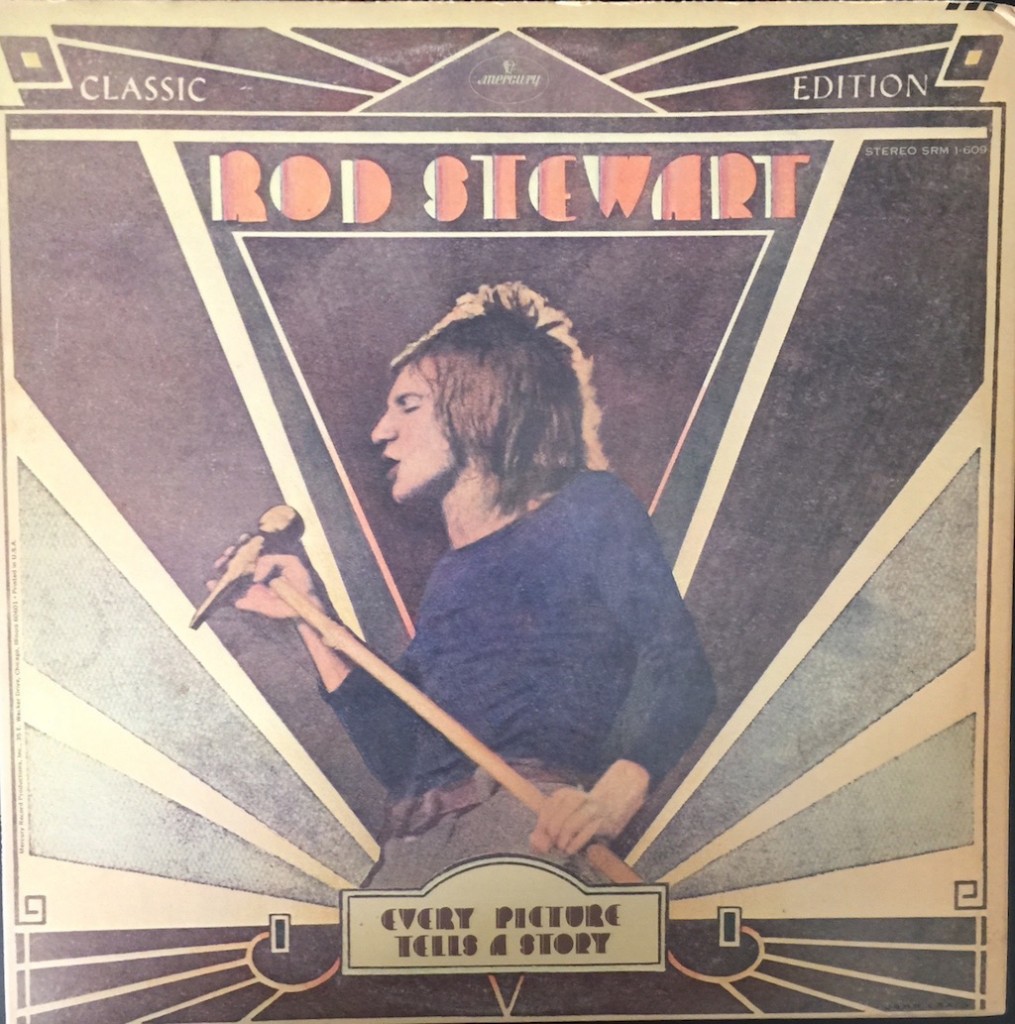
Radio overplay of “Maggie May” at the time of this album’s release proved that familiarity can breed contempt (at least when it comes to music). As a result, I never got “into” early Rod Stewart solo material at the time it was released. But with the passage of time, exposure and perhaps a bit of nostalgia, I started listening to his early albums. (The same thing happened with Elton John but that’s another story and a different article).
Rod had already proven his mettle as a blues wailer on Truth, and had a couple interesting albums on Vertigo[1] while also working with the Faces. This, his third album, really carried the ball forward for Stewart as a brand name talent. Despite its commercial success, it is a very good album, perhaps even better with the passage of time. I now regard it as a classic. Why?
It’s a combination of some good songs and a few great ones; some impressive stringed instrument playing that adds layers of texture and interesting details, but at bottom, it just rocks– Rod is in prime form, and the power of the songs, top-tier playing and a driving beat gets your head bobbing. One of the things I like about this era of rock is that the recordings typically are not over-produced. There is a lot going on here, but it isn’t “slick” sounding. The fact that some of these songs are so familiar is no longer a negative to me; I guess that’s where the nostalgia part kicks in. It’s a hell of an album, and if you haven’t listened to it in years, be prepared to enjoy yourself. Immensely.
Some familiar “Faces” appear on this record, along with the unnamed “mandolin player in Lindisfarne,”[2] Danny Thompson (killer bass player, see Solid Air review). Two “Bells” (Madeline and Maggie) add backing vocals, along with “Long John” Baldry and “Mateus Rosé.” The credits are a mess, and I’m still puzzled by the “Martell Brandy” credit.
The album was recorded at Morgan Studios,[3] whose track record from the era is simply stunning.
The album was released on Mercury in both the US and UK.
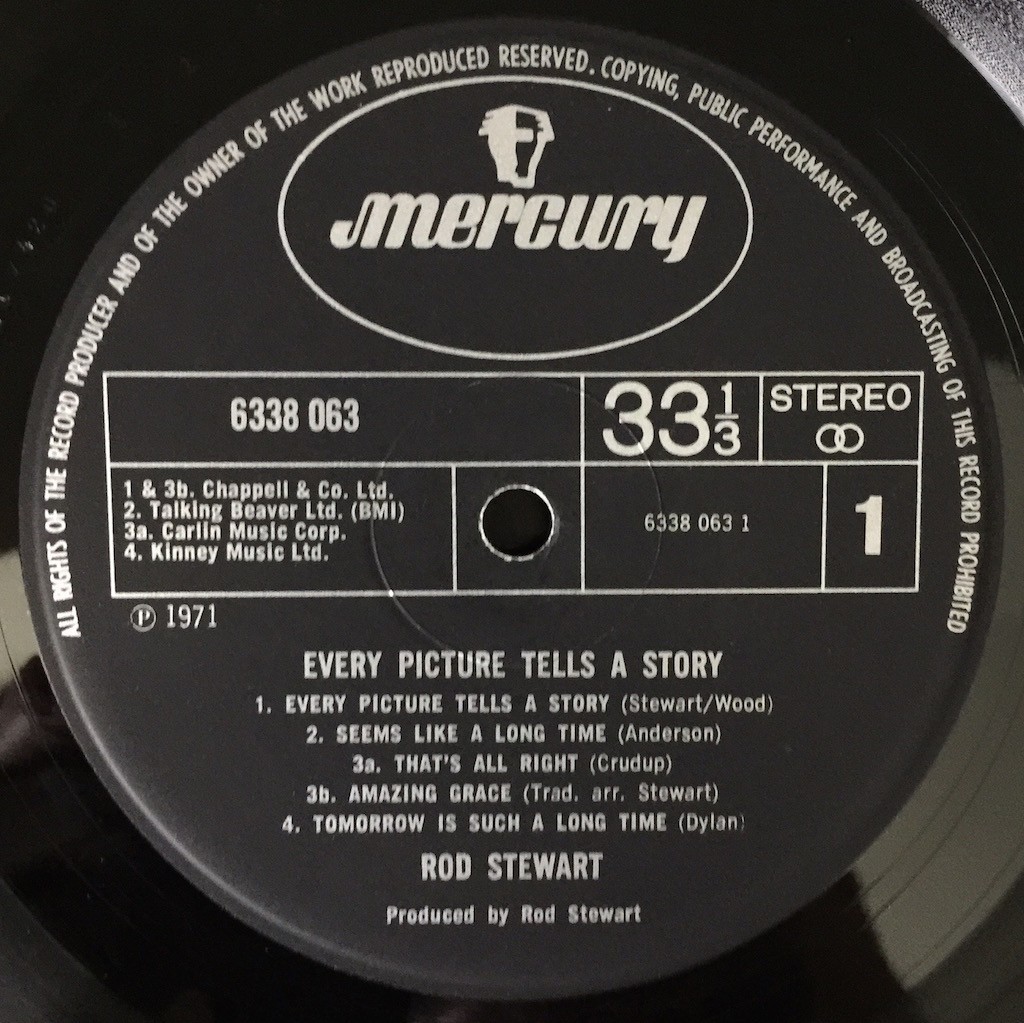
I have a UK black label Mercury and a white label promo from the U.S. (matrix info: UK: 1y1/2y1; U.S.: stamped M-1).[4]
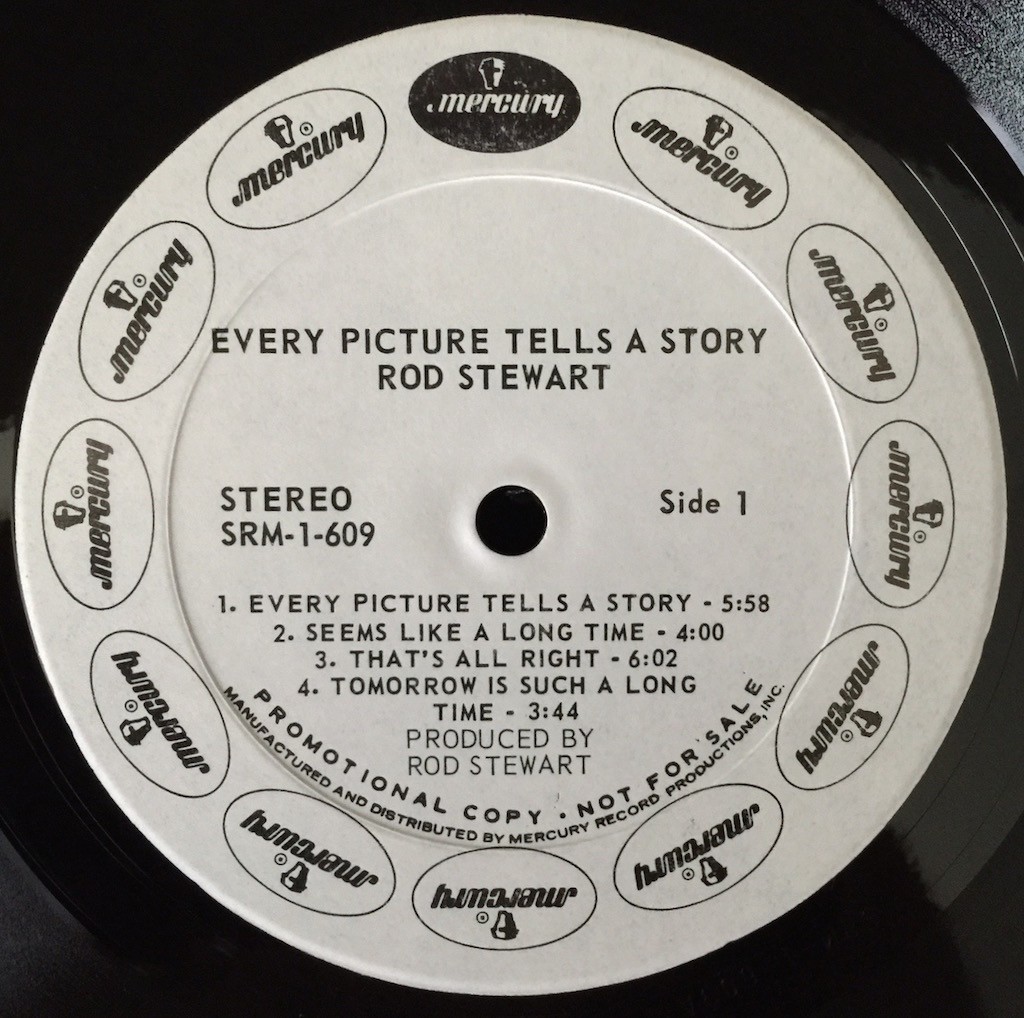
Here are some listening notes of a comparison between them. My buddy Max was visiting from NOLA, so he took part in the comparisons as well. (We did not compare these in a “blind” test, i.e., we knew which record was being played at the time, but agreed not to discuss our findings until this write-up). Not all tracks were covered, only those mentioned below:
Side one
“Every Picture Tells a Story”- Bill H: The WLP is punchier and more dynamic, but the UK press has very nice guitar tone, the background vocal and hi-hat seemed more evident, the overall tonal balance of the UK was great. Max: the UK has that characteristic “round,” “warm” sound, guitars are nice; the latter part of the song where the refrain “Every Picture” is repeated sounded more congested than earlier parts of the song. The WLP was flat out livelier.
“Seems Like a Long Time”- Bill H: This particular track, out of all of those we listened to on the UK, sounded the best, and I preferred it to the WLP. Yes, it was “warmer” but it also sounded more like real instruments to my ears. The WLP is more immediate on this track, not harsh in any way. Max: Both records sounded very close on this track. Both sounded the strongest and clearest on this song among any we listened to on either copy.
“That’s All Right”- Bill H: Guitar had more texture on the WLP, piano and bass sounded more robust and overall the WLP was more dynamic. Max: The UK sounded a little “boxy” and the sound quality was inferior to the preceding track, “Seems Like…”. Bass guitar lines were more distinct and overall the track had more clarity on the WLP.
Side two
“Henry” -Bill H: Wow! Texture galore. The UK was warmer, but both were great on this short intro segment. Max: I could live with either copy.
“Maggie May” Bill H: The WLP was far more dynamic, the drums thrashed with greater impact and string texture was more evident; nice overall tonal balance; the UK, by comparison, was not as clear or dynamic- almost sounded “muted” by comparison to the WLP. Max: Rod wanted Maggie to wake up; I wanted the UK track of this song to wake up. The WLP had very natural vocals and the organ sounded great, as did the mandolin. This track and the title track really show the differences between these pressings.
“(I Know) I’m Losing You”- Bill H: the WLP was far more dynamic; the UK sounded less loud, but the percussion solo on the UK was delivered with great tone and you could hear the skin of the drums; when the piano and fuzz guitar kicked in, the UK rocked. Max: The UK has a nice, full round sound; the latter part of the song- the “jam” sounded great! The WLP had more distinct bass guitar and overall had greater clarity; the jam at the end sounded “raunchier” in a good way.
On balance I think both of us preferred the WLP to the UK pressing but there were aspects of the UK, such as those noted above, that make it a desirable, and highly listenable pressing.
Mobile Fidelity re-mastered this album a few years ago but I have not heard that version.
In the aftermath of the psych-blues-rock movement that exploded out of England in the mid-to-late sixties, and a similarly strong, eclectic folk-rock movement there, Stewart managed to pull these various strands together to make a very accessible “pop” record; one that exceeds the sum of its parts and effectively combines rock, ballads, soul and bluesy elements. The record was a huge commercial success at the time and has proved enduring more than four decades later. I’m glad I finally discovered this album.
∞
The Rod Vertigos and the later two-fer:

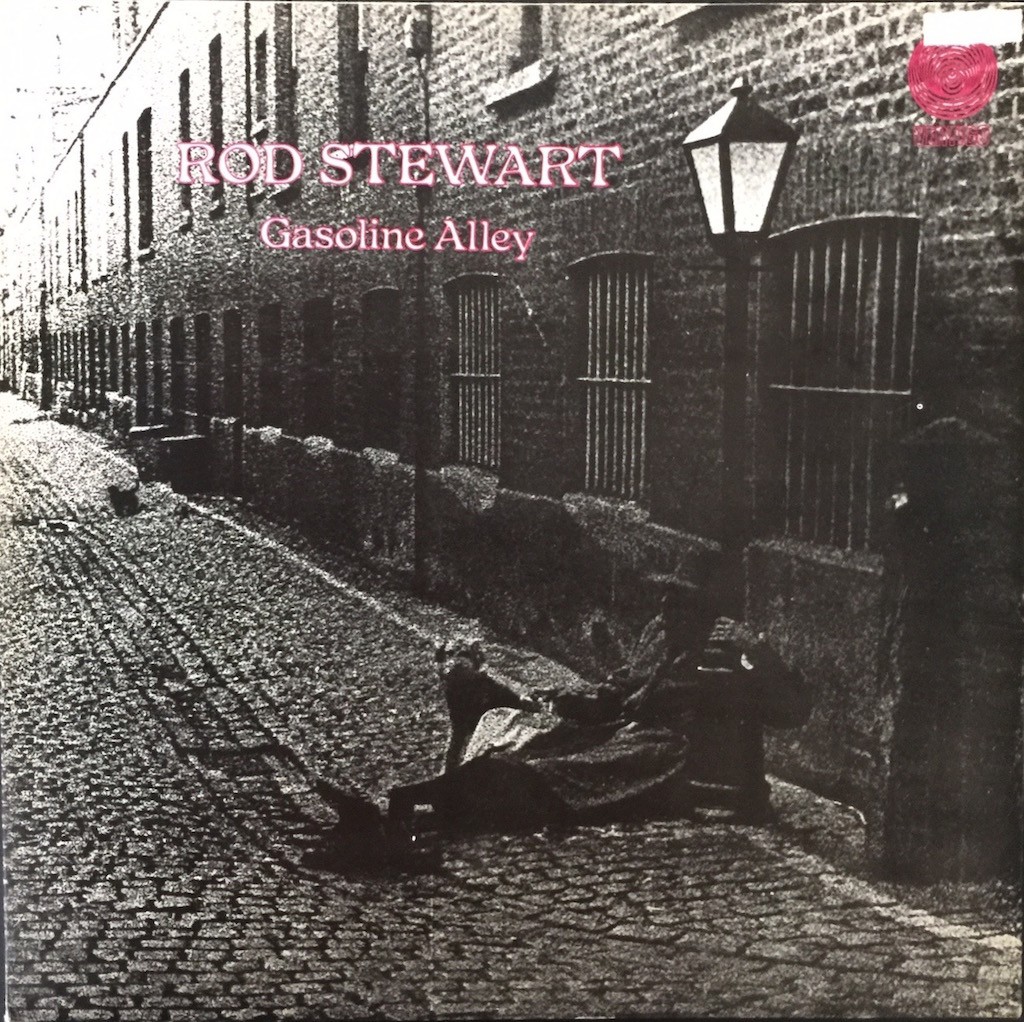
The Vertigos, above, and the “two-fer” below:
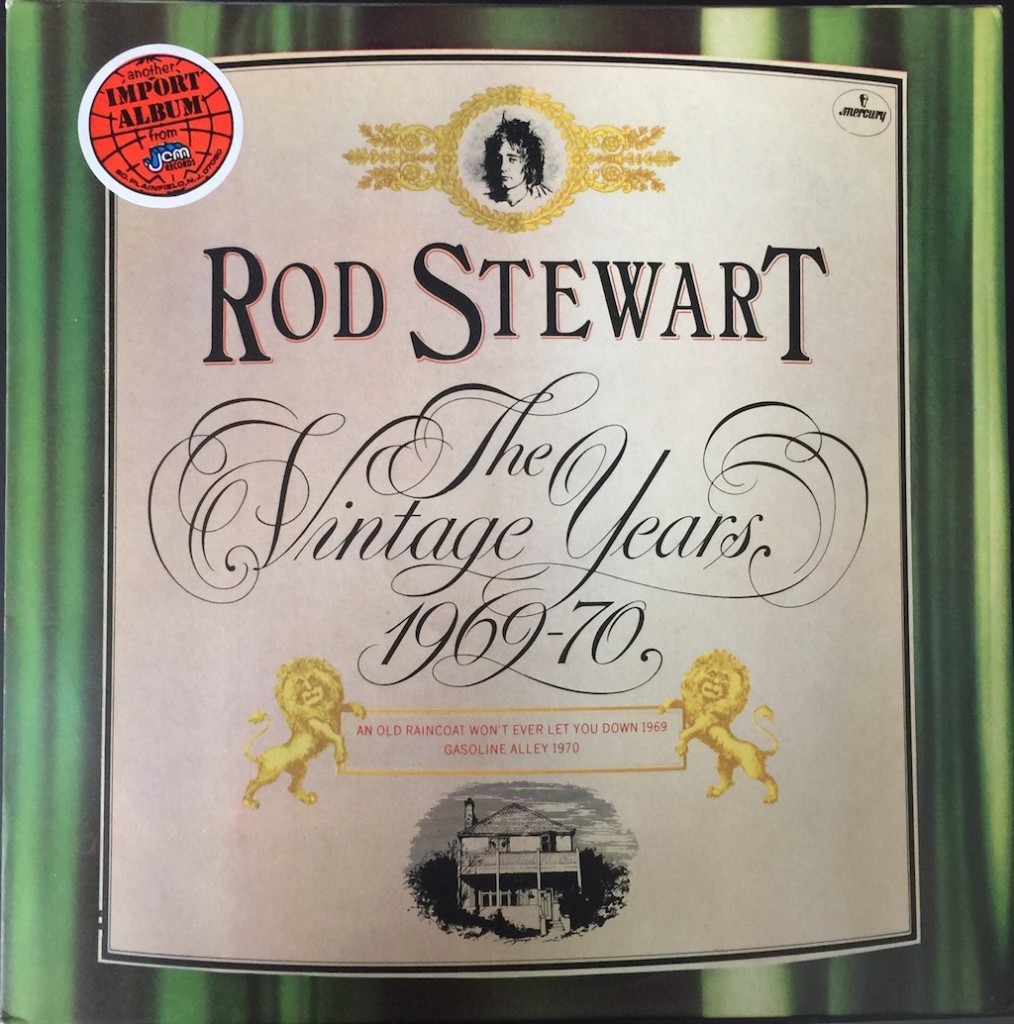
________________________
[1] Those two albums, An Old Raincoat Won’t Ever Let You Down and Gasoline Alley, never made a dent in the States, though the single, “Handbags and Gladrags” later charted. If you don’t want to pay the tariff for the original UK Swirls (and these are among the less expensive Vertigos), there is a reissue from 1976, The Vintage Years, which two-fers both Vertigo albums. The UK copy of The Vintage Years may be a good way to get these two albums at reasonable cost. I may do a shoot-out between The Vintage Years and the original Vertigo albums at some point in the future.
[2] Ray Jackson.
[3] Except for “I’m Losing You,” which was cut at Olympic Sound in London. Mike Bobak engineered the record.
[4] It is unclear if Gilbert Kong mastered this WLP; though there are some faint letters inscribed in the deadwax, and one letter is a “G,” the second letter is not a “K” and may be a “P” but does not look like a Piros inscription. The WLP also has the initials “PR.” For completeness, I probably should add a ‘GK’ mastered “standard issue” U.S. copy to the comparison, but will have to supplement this piece to do so.